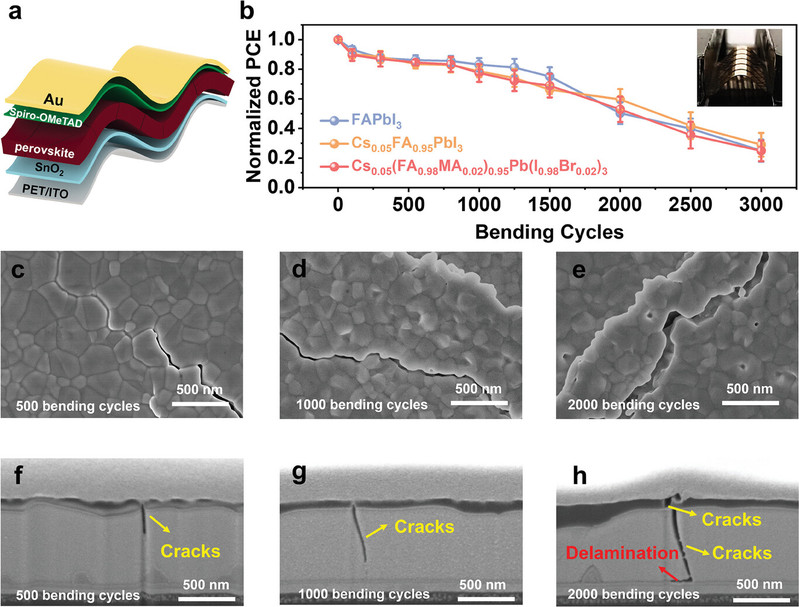Stereoscopic Polymer Network for Developing Mechanically Robust Flexible Perovskite Solar Cells with an Efficiency Approaching 25%
Yeyong Wu1, Guiying Xu1(许桂英)*, Yunxiu Shen1, Xiaoxiao Wu1, Xiaohua Tang1, Chuanshuai Han1, Yujin Chen2, Fu Yang1,2,3, Haiyang Chen1, Yaowen Li1,3,4(李耀文)*, Yongfang Li1,3,5
1Laboratory of Advanced Optoelectronic Materials, Suzhou Key Laboratory of Novel Semiconductor-optoelectronics Materials and Devices, College of Chemistry Chemical Engineering and Materials Science, Soochow University Suzhou 215123, China
2Suzhou Sunflex New Energy Company Limited Suzhou 215100, China
3Jiangsu Key Laboratory of Advanced Negative Carbon Technologies Soochow University, Suzhou 215123, China
4State and Local Joint Engineering Laboratory for Novel Functional Polymeric Materials Jiangsu Key Laboratory of Advanced Functional PolymerDesign and Application College of Chemistry Chemical Engineering and Materials Science Soochow University Suzhou 215123, China
5Beijing National Laboratory for Molecular Sciences CAS Key Laboratory of Organic Solids Institute of Chemistry Chinese Academy of Sciences Beijing 100190, China
Adv. Mater. 2024, 36, 2403531
Abstract: Flexible perovskite solar cells (pero-SCs) have the potential to overturn the application scenario of silicon photovoltaic technology. However, their mechanical instability severely impedes their practical applicability, and the corresponding intrinsic degradation mechanism remains unclear. In this study, the degradation behavior of flexible pero-SCs is systematically analyzed under mechanical stress and it is observed that the structural failure first occurs in the polycrystal perovskite film, then extend to interfaces. To suppress the structural failure, pentaerythritol triacrylate, a crosslinked molecule with three stereoscopic crosslink sites, is employed to establish a 3D polymer network in both the interface and bulk perovskite. This network reduced the Young's modulus of the perovskite and simultaneously enhanced the interfacial toughness. As a result, the formation of cracks and delamination, which occur under a high mechanical stress, is significantly suppressed in the flexible pero-SC, which consequently retained 92% of its initial power conversion efficiency (PCE) after 20 000 bending cycles. Notably, the flexible device also shows a record PCE of 24.9% (certified 24.48%).

链接://onlinelibrary.wiley.com/doi/10.1002/adma.202403531